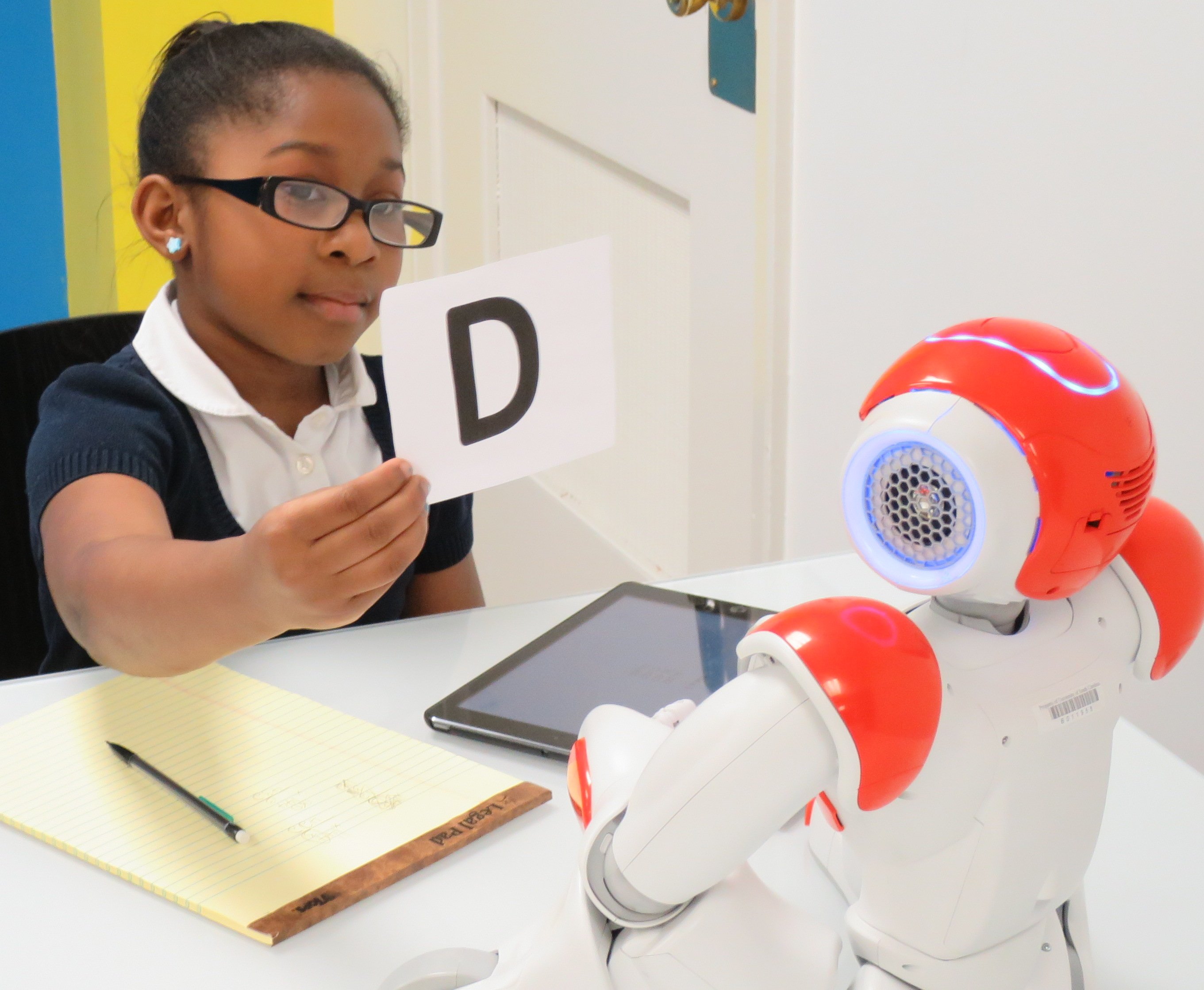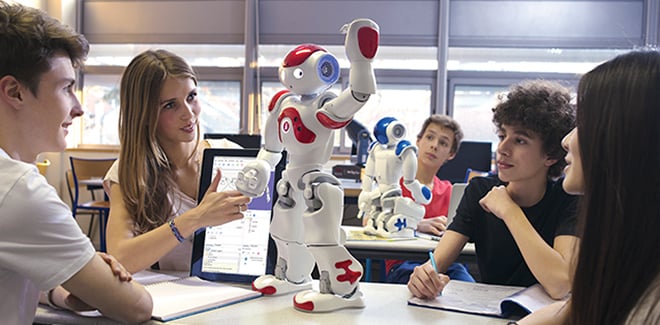
Artificial intelligence and machine learning play an important role in promoting remote learning in this era where many institutions are going digital. The growing implementation of technology in education is creating a remote learning gap amid the COVID-19 pandemic.
Robots can be used to allow geographically dispersed people to participate in important meetings and events. They are helping students to remain connected to their teachers or fellow students to ensure learning continuity. This blog reveals why robots are the bridge to the remote learning gap.
How robots work
Some robots feature tracking devices that instructors leave in classrooms or wear around their necks- it knows the direction it should point its camera. Others are controlled by students remotely through a downloaded widget on various devices such as laptops or iPads. The students can adjust their view to see the board and also know what is happening in class. Instead of asking people what is happening, the students move the camera in the right direction.
Some robots are suitable to avoid a conflict of control of the devices. However, with proper planning, the robot control devices can be shared among learners and cohorts attending remote classes on different days. The instructors can use robots in data collection and test different remote learning processes. Automated learning facilities are designed to operate without human intervention, including systems such as chatbots that are used to communicate with students.
Since they are more immersive, robots are reducing the feelings of remoteness and isolation among learners. Parents and students feel that robots are great ways to accommodate everyone and encourage learner participation. Parents appreciate the technology because they feel that it is teaching learners valuable lessons regarding resilience.
Video conferencing
Video teleconferencing facilities have helped many students to stay connected during the C0VID-19 pandemic, but robots can supplement videos to boost student learning experiences. Unlike regular video conferencing tools such as Zoom, the students can control the robot by moving it around the class environment. They can move the robot and be heard and seen, participate in remote learning and interact socially with their classmates. Through the video conferencing facilities that robots provide, students no longer need to skip school due to health challenges.
The experts at dissertation help say that organizations wishing to train their employees remotely can also change policies to break educational barriers faced by employees who are unable to attend courses. They need evidence-driven solutions and interventions to enhance efficiency and effectiveness.
RobotLAB is a leader in the market of robotics with innovative approaches to improve your business efficiency and minimize human contact. The passionate team in the company will offer you complete guidance depending on your area of interest. The service covers different markets such as hotel robots, restaurant robots, banking robots, retail robots, and more.
Telepresence services
Students missing school due to illnesses are getting to be heard and seen remotely through the telepresence robot service. The robots which resemble electronic tablets can move around the playground or classroom at the will of students through electronic devices.
The learners can activate the robot at home or any other place and appear as though they are in school physically. Unlike video conferencing tools such as Skype or Zoom, telepresence robots are designed to “teleport” learners with serious illnesses or injuries into the classrooms.
The students can access the classroom and actively participate from the hospital or their home. A pilot robot called See-Be is said to have emotional, mental, and social benefits among remote learners. With the telepresence robot services, students who used to miss school for extended periods due to illnesses will no longer suffer. Prolonged absence from school could leave students feeling alienated, which may affect their emotional and social well-being.
Robots technologies offer exciting and new ways to bridge gaps between home, school community, and the hospital. This may help to prevent or minimize the negative effects of missing school due to illnesses. Institutions are using robots to allow students to participate in practical events in an interactive virtual environment. Technology demonstrators help academicians to explore and discover the abilities of technologies to support remote learning.
Empowerment through robots
Remote learners can preview robots during orientation to gather insights into how they operate. The institutional leaders can meet with individual learners to show them how to place robots in class and move them around. At the initial stages of robots’ implementation, some students may be concerned about the robots being destructive or noisy. The best way to alienate fears is by allowing the student to gain some experience in their usage.
Given that people need to embrace technology in learning, it makes sense for learners to understand how to operate robots before they begin their courses. Learning how to use robots is easy, but the main problem is unlearning hand signals that students get used to during zoom classes.
The instructors should record videos of their classes and review them to have an idea of students’ interaction with the robot technology. There is no right strategy through which to embrace robotics learning-the most important thing is to acquaint students with the technology before learning begins.
The inequality effect
The current technological advancements have the potential to disrupt learning locally and internationally. However, some pitfalls could lead to a segregated job market characterized by a divide between high-skill and low-skill segments.
In the future, talent could be an important factor of production in addition to capital and labor. Robots have immediate benefits for people because they simplify lives, create job opportunities, and provide entertainment. However, there is an issue of limited access to digital resources from a professional and educational point of view, which could trigger economic inequality.
Robotics can be a solution to the problem of economic inequality when put in the hands of the right people. For instance, distance learning projects could enable individuals to acquire skills in autonomous systems and robotics to bridge the skills gap across institutions. Remote learning projects use state-of-the-art robots and cloud computing to create learning activities for people in different levels of education. The projects can enable learners to write programs remotely regardless of their economic and social status.
The students can also test the programs using simulation and on the programs on remote robots to check their efficacy. The remote learning projects could address inequalities in the autonomous systems and robotics industry.
Humanitarianism in the digital age
The implementation of innovative technologies is affected by the social system and the technology itself. Most international organizations are integrating robotics in their online learning projects to support humanitarian efforts, creating job opportunities in the education sector. People in emerging economies should learn marketable skills to be used by humanitarian organizations for crisis management in remote learning. The answer to bridging the gap caused by technological innovation is training and education of robots and knowledge transfer for social good.
Data experts can liaise with various stakeholders such as government agencies and entrepreneurs to create jobs and capacity building. Whether it is to improve access to remote learning opportunities, organizations are embracing the bottom-up sustainable system in remote learning instead of using a conservative approach.
Conclusion
Robots play an important role in bridging the remote learning gap across different institutions globally. They enable learners to attend and participate in their remote learning regardless of their physical location or medical conditions. Robots are here to stay, but they should be accessible to vulnerable members of the community. Bridging the remote learning gap requires embracing robots for sustainable sharing of technological skills and social good.
Learn more about Robots with RobotLAB!

For over a decade, RobotLAB is leading the Educational Robotics market with an innovative approach that makes Robotics and VR truly useful in the hands of educators. Our passionate team will guide you from point A to Z and beyond.
About the author:
Tiffany Harper is a training guru who’s been working in the corporate sector as a technology expert for several years now. She is a management graduate and loves to share her experience through blogs and expert articles with one essay writer. For her love of writing, she provided online consultations for the dissertation writing services while working with BrillAssignment. Please do not hesitate to contact her on LinkedIn.


